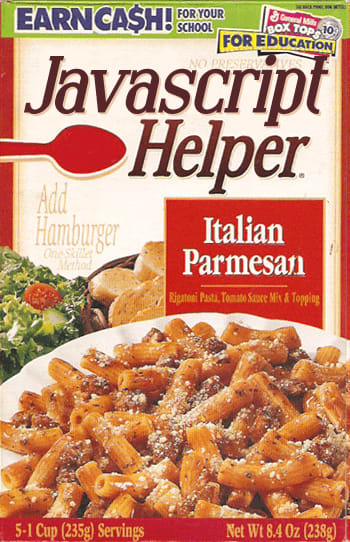A few DOM helpers to assist with the transition from jQuery to vanilla JavaScript.
indexInParent
export function indexInParent(el) {
let children = el.parentNode.childNodes;
let num = 0;
for (let i = 0; i < children.length; i++) {
if (children[i] == el) return num;
if (children[i].nodeType == 1) num++;
}
return -1;
}
indexOfParent
export function indexOfParent(el) {
return [].indexOf.call(el.parentElement.children, el);
}
matches
export function matches(elem, selector) {
const isMsMatch = 'msMatchesSelector' in elem && elem.msMatchesSelector(selector);
const isMatchSelector = 'matchesSelector' in elem && elem.matchesSelector(selector)
const isMatch = 'matches' in elem && elem.matches(selector);
// Test the element to see if it matches the provided selector
// use different methods for compatibility
return isMsMatch || isMatchSelector || isMatch;
// Return the result of the test
// If any of the above variables is true, the return value will be true
}
closest
For each element in the set, get the first element that matches the selector by testing the element itself and traversing up through its ancestors in the DOM tree.
Depends on matches;
export function getClosest(elem, selector) {
// This allows for matching based on any selector, not just a single class.
for (; elem && elem !== document; elem = elem.parentNode) {
// Traverse up the dom until document is reached
if (matches(elem, selector)) {
// Test each element to see if it matches. If it does, return it.
return elem
}
}
return null;
}
export const closest = getClosest;
Usage for the above that's in a file set up for tree shaking, e.g., helpers.js
import { closest } from 'js/helpers';
offset top
export function getOffsetTop(el) {
let offsetTop = 0;
do {
if (!isNaN(el.offsetTop)) {
offsetTop += el.offsetTop;
}
} while (el = el.offsetParent);
return offsetTop;
}
next
Get the immediately following sibling of each element in the set of matched elements.
Depends on matches, prev;
export function next(el, selector) {
if (el.nextElementSibling) {
if (matches(el.nextElementSibling, selector)) {
return el.nextElementSibling;
} else {
return prev(el.nextElementSibling, selector);
}
}
return false;
}
prev
Get the immediately preceding sibling of each element in the set of matched elements.
Depends on matches;
export function prev(el, selector) {
if (el.previousElementSibling) {
if (matches(el.previousElementSibling, selector)) {
return el.previousElementSibling;
} else {
return prev(el.previousElementSibling, selector);
}
}
return false;
}
siblings
Get the siblings of each element in the set of matched elements.
Depends on matches;
export function siblings(el, selector) {
return Array.prototype.filter.call(el.parentNode.children, function (child) {
return matches(child, selector);
}) || [];
}
Originally published at jimfrenette.com/javascript/document



Top comments (1)
Let the browser do the work.
:scopein QSA refers to the node you're calling it on;siblingsexcludesel; and finally, a selector other than a simple selector won't match anything anyway because:In jQuery,
$('li.second').siblings('ul > li')would return an empty set -li.seconddoesn't have anyulsiblings, nor are it's descendants siblings of it, so supporting anything but a simple selector is moot.